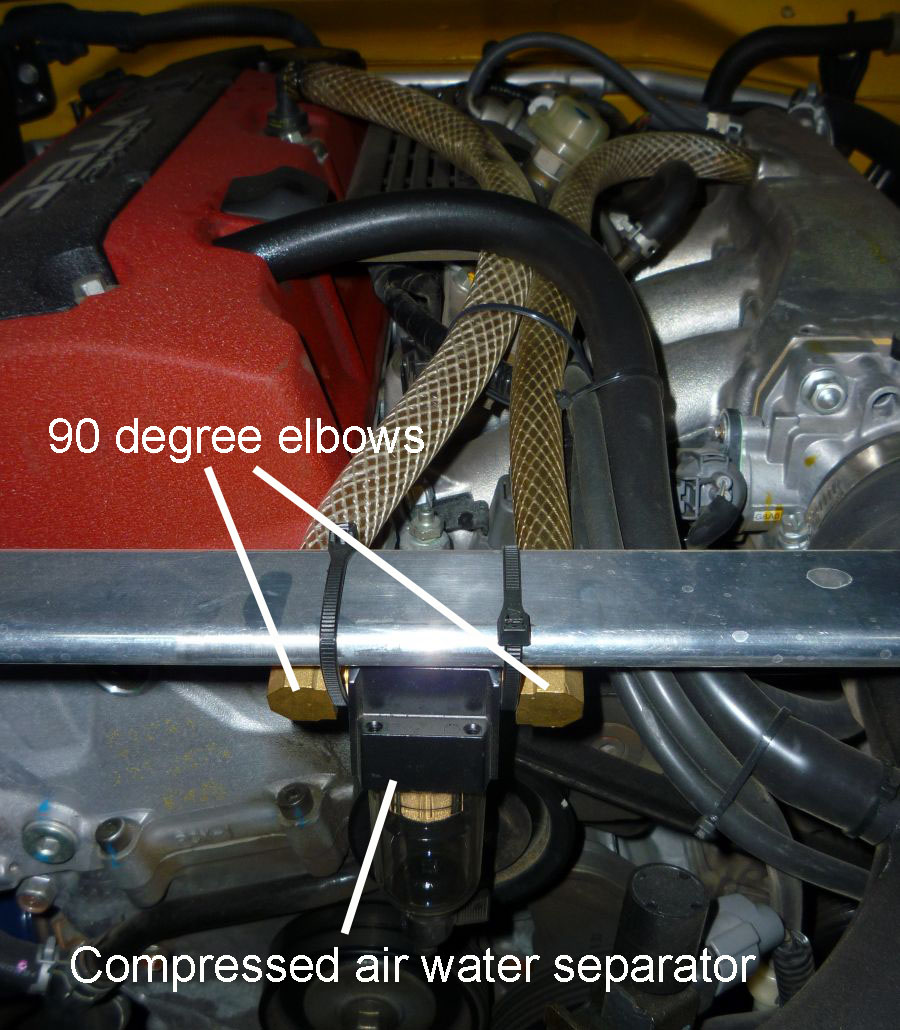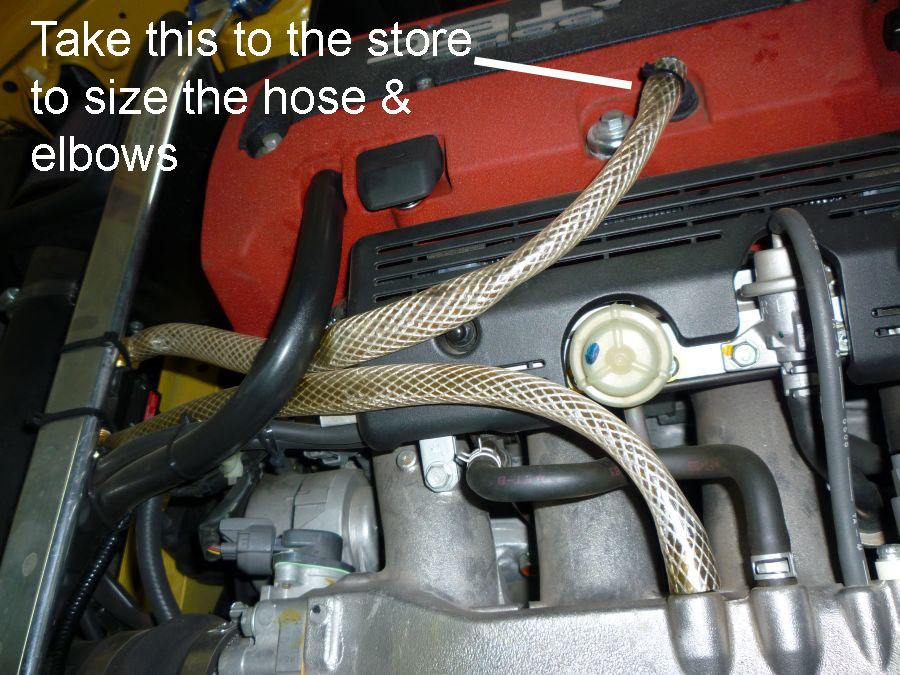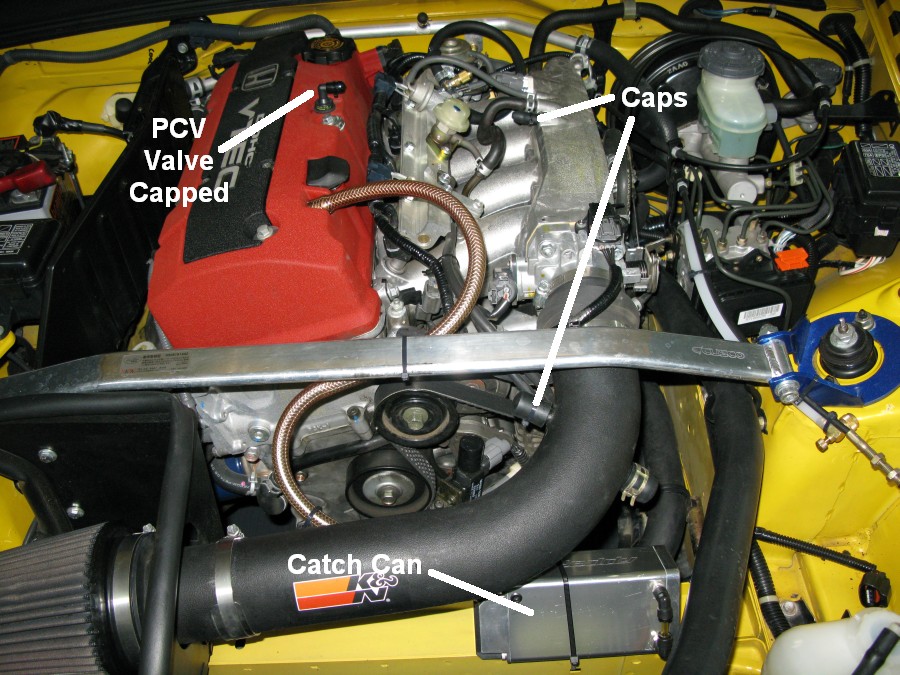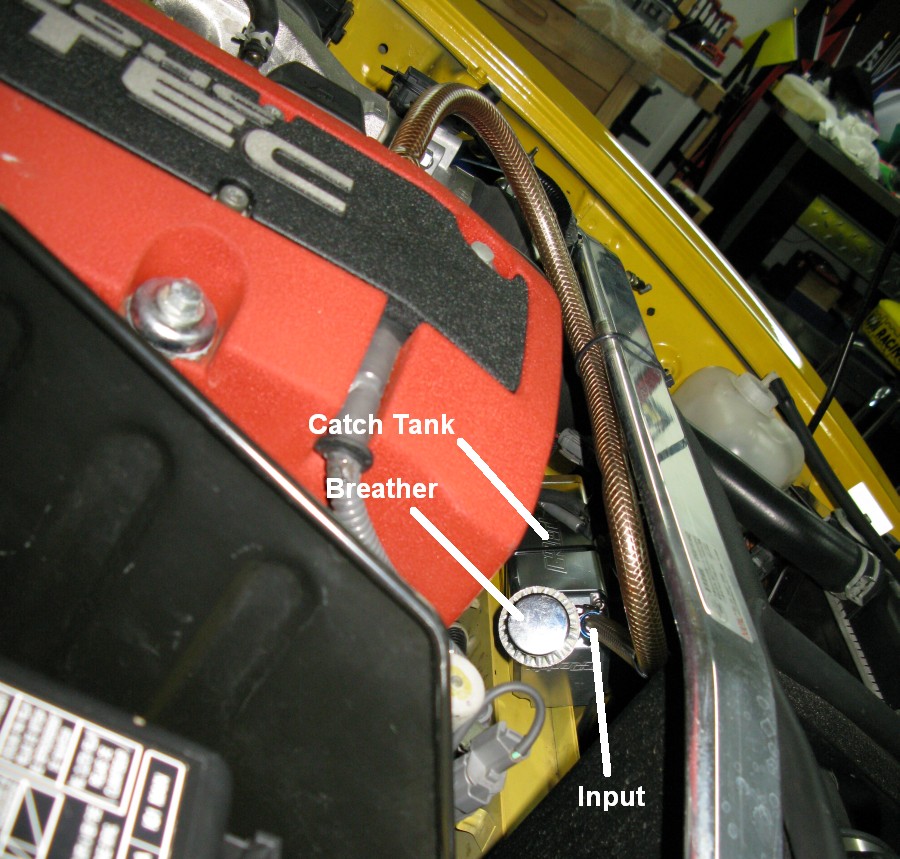S2000 Oil Catch Can
By Rob Robinette
The AP1 S2000 has a habit of spitting big blue oil clouds while on the track in extended right hand corners. An oil catch can will solve the problem and keep you from scaring the crap out of people behind you in fast sweepers. The S2000 valve cover has a baffle (see pic below) that traps oil near the PCV (positive crankcase ventilation) valve. The PCV valve allows the intake to suck blow-by gasses out of the valve cover. It also seems the higher the oil level on the dipstick the more likely you'll burn oil through the PCV valve.
When the throttle butterfly closes during a high RPM shift (or throttle feather) a great amount of vacuum is created in the manifold. This vacuum sucks air from the valve cover's front large vent into the valve cover. This air along with blow-by gasses and oil are sucked across the valve cover baffle, out the PCV valve and into the manifold. The engine burns the oil and produces blue smoke. By placing a catch can in the PCV valve hose you can trap oil and keep it out of the intake.

AP1 Valve Cover Baffle Showing Location of PCV Valve and Front Vent Line
There are two vacuum lines that can be tapped for a catch can. The most common is the PCV valve line. This line is the cause of most "blue smoke" problems. The other location is the large line that runs from the front of the valve cover to the intake. If you're not concerned about keeping emissions legal the best solution is to cap the PCV valve and put a catch can in the large hose. This is what I did to my S2000 race car. The PCV valve uses 5/16 inch inside diameter hose and the large front vacuum line is 1/2 inch inside diameter. I sourced the vacuum hose and caps at Autozone.
A very simple solution to on-track oil smoke is to simply clamp the PCV valve line shut using a large clamp style paper clip while running on track. Unclip the line before the drive home.
For my emissions legal catch can I sourced most of it from Home Depot. It consists of a small (too small, see Update 3 below) compressed air water separator (air tool section of the store), two 90 degree elbows with 3/8 inch hose barbs on one end and male 1/4inch NPT thread on the other (plumbing section), and some plastic hose.
Update: The plastic hose pictured ended up collapsing under vacuum so I upgraded to two 18 inch long pieces of 5/16 inch fuel injection hose sourced from any auto parts store.
Update2: A collapsing PCV valve line is actually a good thing. Under normal driving conditions the hose does not collapse and the PCV valve works as intended but during high RPM shifts when vacuum through the line is very high the lines collapse and keep oil from being sucked through the line. It's a poor man's "active" PVC valve system.
Update 3: The catch can pictured was too small and oil was simply blowing right through the tank. I have seen the next size up air/water separation tank installed in the same location and it works well. Matt would catch about a 1/4 of a quart every track session or two.
Small Catch Can in PCV Valve Line
I used 5/16 inch hose but you can just pop out the PCV valve and take it to the auto parts and hardware store so you can get the right size hose and 90 degree elbows. The elbows are 3/8 inch barbed on one end for the hose, and 1/4 inch NPT thread on the other. The water separator has a valve on the bottom to empty the trapped oil. You can unscrew the glass part of the separator and drain it back into the engine. The length of hose and mounting position are not critical but if you have a shock tower bar mounting it there works well. I have seen catch cans mounted on the stock air box too, but you'll need about 21 inch long lines to make that work. If you remove the cruise control actuator a catch can will fit there too.
Racing Catch Can V2.0 (not emissions legal)
PCV Valve Line Removed, Catch Can in Large Vent Line
This is my current setup. I completely removed the PCV Valve vacuum hose and capped both ends. I connected a Greddy catch can to the valve cover's large (1/2 inch inside diameter) front vent line. I placed a breather filter on the catch can's outlet and capped the input on the intake. I could have run a line from the catch can to the input on the intake (before the throttle butterfly) but a breather filter keeps things simpler.
View of Catch Tank's Breather Filter and Vent Hose Input
Racing Catch Can V3.0
[UPDATE: This setup sucked way too much oil from the valve cover and I removed the vacuum lines one-by-one to find a vacuum setup that worked but I ended up having to remove all the vacuum lines to keep from sucking almost a quart of oil per 20 minute session. I went back to the previous setup (V2 above) with simply a vent line from the valve cover to the catch can with an air filter outlet.]
The RobMod Mongo Catch Can. My engine builder is a big fan of venting the valve cover so I decided to go overboard. I installed an AP2 (2004) valve cover with two -AN8 bungs welded in. This is a common setup for forced induction S2000s. I ran lines from the two -AN8 bungs and one line from the valve cover's large vent line to the catch can. I mounted the Greddy catch can on the cross member. I attached the intake tube's 3/4 inch unused air pump inlet and the standard 1/2 inch valve cover inlet to the catch can to supply 2 vacuum lines to the can. Under full throttle vacuum in the intake tube will vent the catch can and valve cover. The PCV line is still capped off as shown above.
A simpler alternative to having two -AN bungs welded to the valve cover would be to drill two 3/4 inch holes in the front of the valve cover and tap them for 1/2 inch NPT then install two 1/2" NPT to 1/2" hose barb connectors.

RobMod Mongo Catch Can
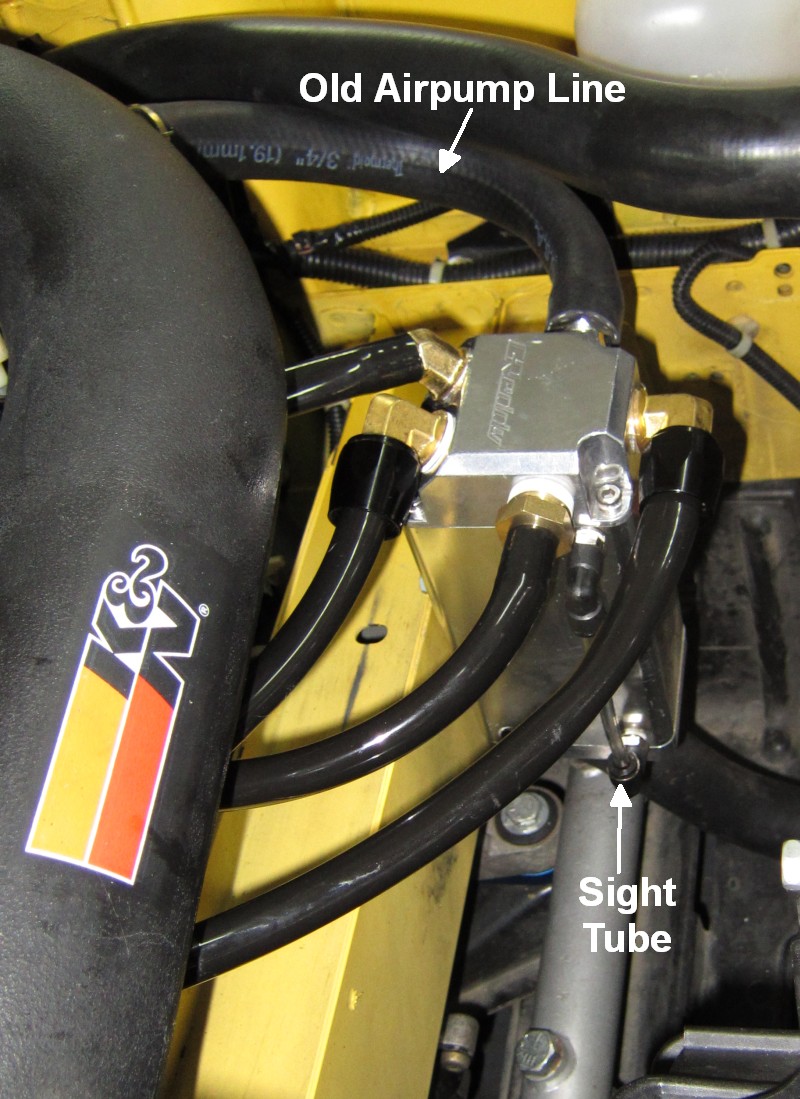
The valve cover vent uses 1/2 inch inside diameter hose. The air pump line uses 3/4 inch inside diameter hose. The catch can came with two 3/8 inch National Pipe Thread (NPT) ports. I drilled them out to 3/4 inch and added 3 other 3/4 inch holes and tapped them using a 1/2 inch NPT tap (yes, 1/2" NPT needs a 3/4 inch hole). The aluminum can was easy to tap.
Four of the can's ports have 1/2 inch NPT to 1/2 inch hose barb connectors for the 1/2 inch hoses. The air pump line used a 1/2" NPT to 3/4" hose barb connector.
The catch can has a clear sight tube so you can see the oil level and a drain plug near the bottom that can be removed to drain the can.
